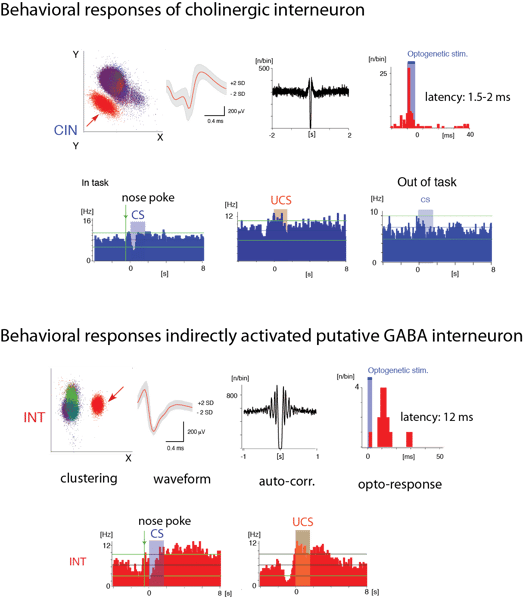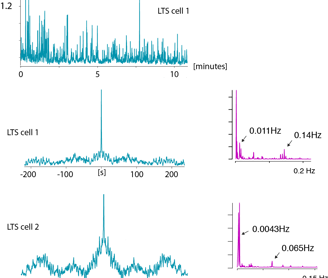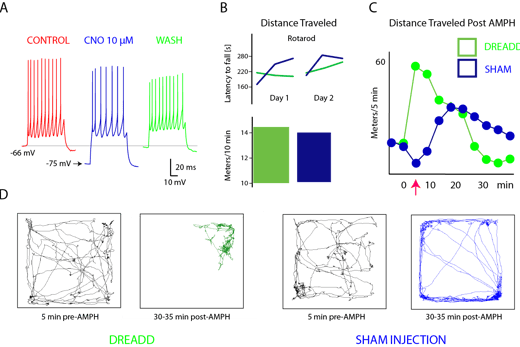

Striatal interneuron function
More recently our focus shifted to investigating the behavioral functions of the interneuron circuitry.
The general paradigm has been to investigate the firing responses of identified neurons in behaving mice performing a variety of tasks and to examine the behavioral effect of lesioning or reversibly inhibiting the cells.
Tetrode recordings of behavioral spiking responses of cholinergic interneurons and a class of unidentified interneurons that are indirectly activated by ontogenetic stimulation of CINs. The animal was performing an auditory cued 2-choice operant task.
The CIN was identified on the basis of a short latency spike response and slow multiphasic spike waveform, and exhibited the previously described cue related pause and rebound firing. Note that the responses to the auditory cue were absent out of context (when the animal was taken out of the training box).
Another interneuron recorded in the same mouse had a long and variable latency optogenetic response, and exhibited a short-duration simple spike identifying it as a putative GABAergic interneuron activated by cholinergic inputs. This neuron also showed the cue related pause and followed by a larger rebound firing suggesting that CINs and specific interneurons jointly encode the pause related information.
What are the behavioral correlates of the activity of interneurons ?




Infra-slow oscillation of 2 LTS interneurons
The activity of THINs and LTS interneurons exhibit semi-periodic fluctuation with dominant frequency components around 0.01 Hz and 0.1 Hz. This is similar to the infra-slow oscillation observed in a variety of experimental measures including human EEG, and BOLD signals. The oscillatory activity of these interneurons is suggestive of their involvement in local neurovascular coupling and the BOLD correlations used to derive functional connectivity measures. This is also supported by the expression of the vasoactive signaling molecules NOS, NPY and VIP in these cells. The inter-areal coordination of infra-slow activity may arise in part from the long-range connectivity of GABAergic interneurons.